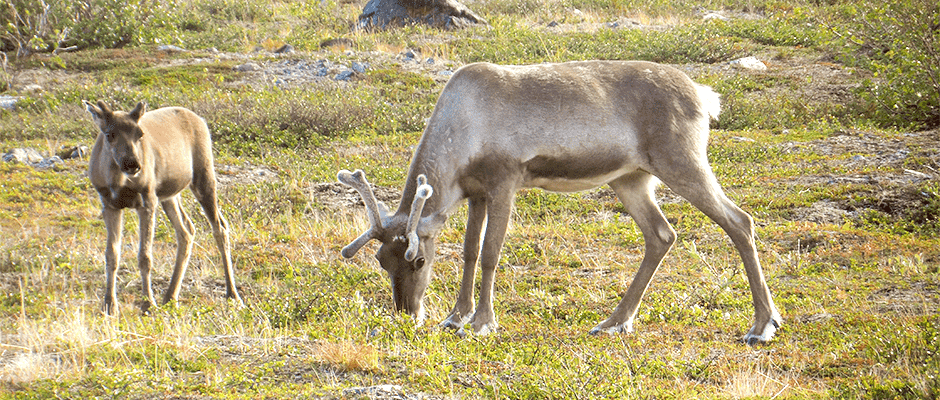Share this article
Could reindeer be slowing climate change?
As the climate warms and permafrost thaws, some tundra dwellers might be helping cool the planet. By grazing heavily and decreasing the height and prevalence of shrubs, reindeer (Rangifer tarandus) allow the earth to reflect more radiation, recent research suggests. Scientists have discovered that high densities of these herbivores could alter the vegetation enough to exert a cooling effect on climate.
“This is an additional ecosystem service we get in the Arctic from reindeer, or caribou, in North America,” said Johan Olofsson, senior lecturer at the Department of Ecology and Environmental Science at Umea University, Sweden, and co-author on the paper, which appears in Environmental Research Letters. “If they disappear, we get more heat absorbed in the current warming climate.”
Oloffson warned that forestry, mining and other human impacts on the reindeer’s winter grazing and calving grounds were threatening their populations throughout the Arctic.
“We have to have sustainable conditions for these migrating animals,” he said.
Past studies had demonstrated that rising temperatures are boosting shrub cover at high latitudes. This dynamic lowers albedo — the solar radiation the ground reflects — and causes the planet to absorb more energy, which exacerbates warming.
Between 2013 and 2014, Olofsson and his team investigated whether reindeer significantly impacted the tundra’s energy balance. The scientists focused on an area in Troms, Norway, which supported a dense population of semi-domesticated reindeer that had intensely grazed the site for 50 years.
Along both sides of a reindeer fence, the biologists measured albedo, precipitation, temperature and various plant characteristics such as height in four types of vegetation. The team then modeled the surface of the field site. The researchers found that in all the vegetation types studied, when reindeer decrease the height and abundance of shrubs, albedo rises. Olofsson and his colleagues concluded that the reindeer’s strong influence on albedo shows that they could play an important role in the earth system.
This could be because reindeer grazing lightens the vegetation’s color and replaces shrubs with flatter grass, Oloffson said.
“Then it reflects more light, making it less warm in the same way a white car in the sun doesn’t get as warm as a black one,” he said. “But it’s also complexity. If something is complex, more light is absorbed. A mirror only works if it’s very flat because all light is coming back. A complex shrub, irrespective of color, will capture more light than a very flat surface.”
Even grazing on shrubs only a few inches high increases albedo as much as grazing on taller ones, Olofsson said. Since most of the tundra consists of shorter, shrubby vegetation, he said, this could apply to vast swaths of the Arctic. Oloffson and his colleagues are now studying how various reindeer densities in Alaska and elsewhere in the Arctic affect albedo.
Header Image: Reindeer grazing at the study site in Troms, Norway, in August 2013. ©Mariska te Beest








